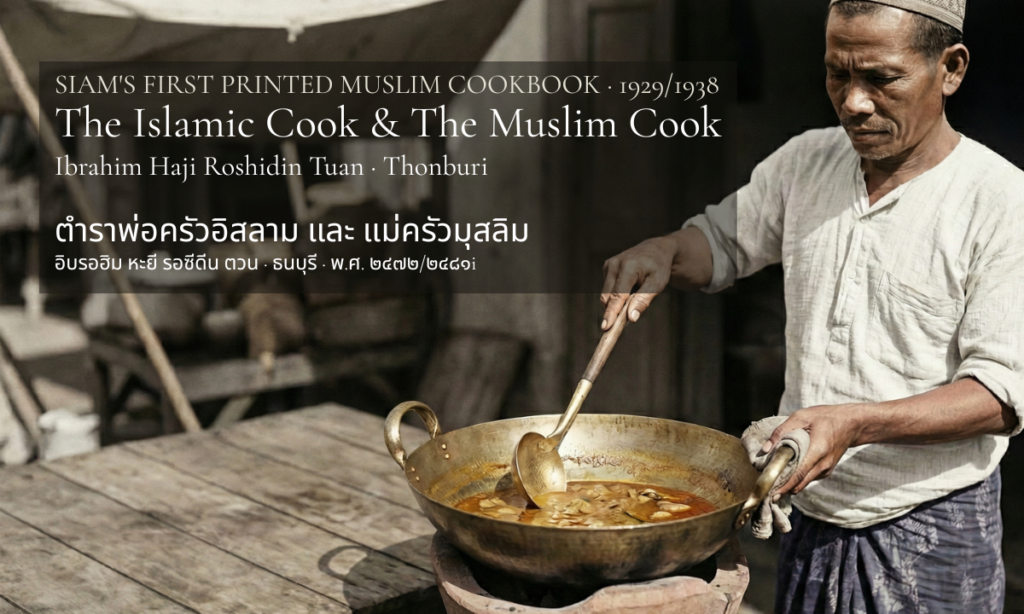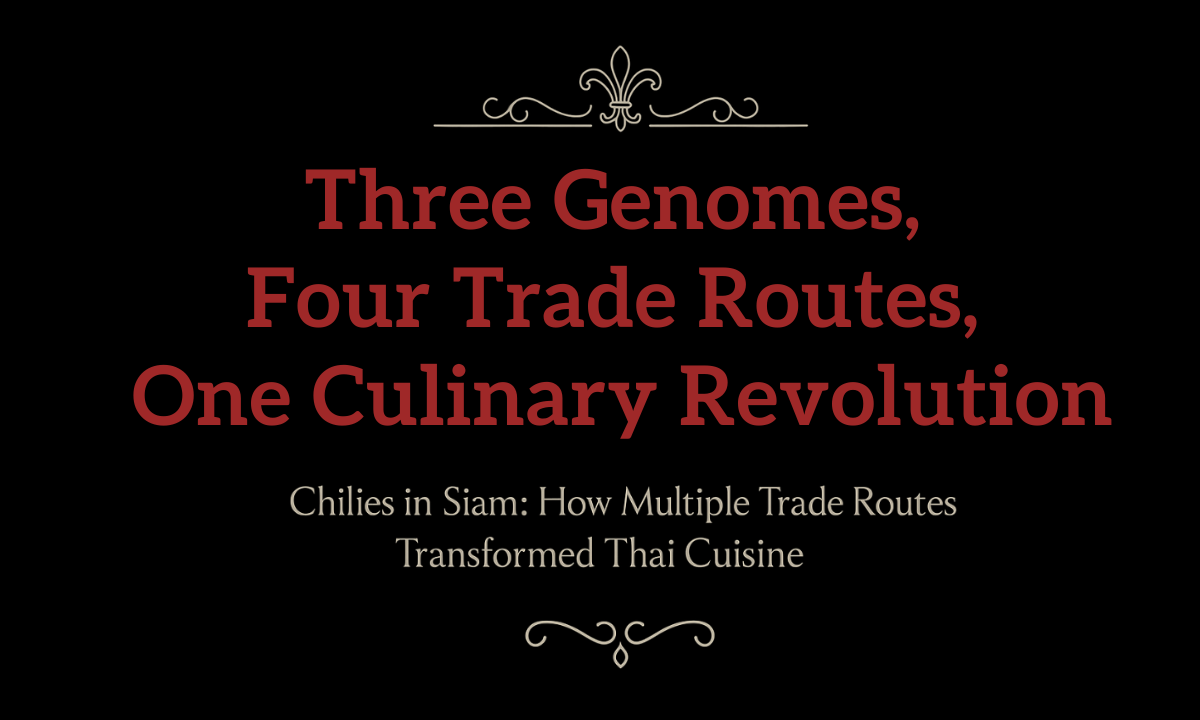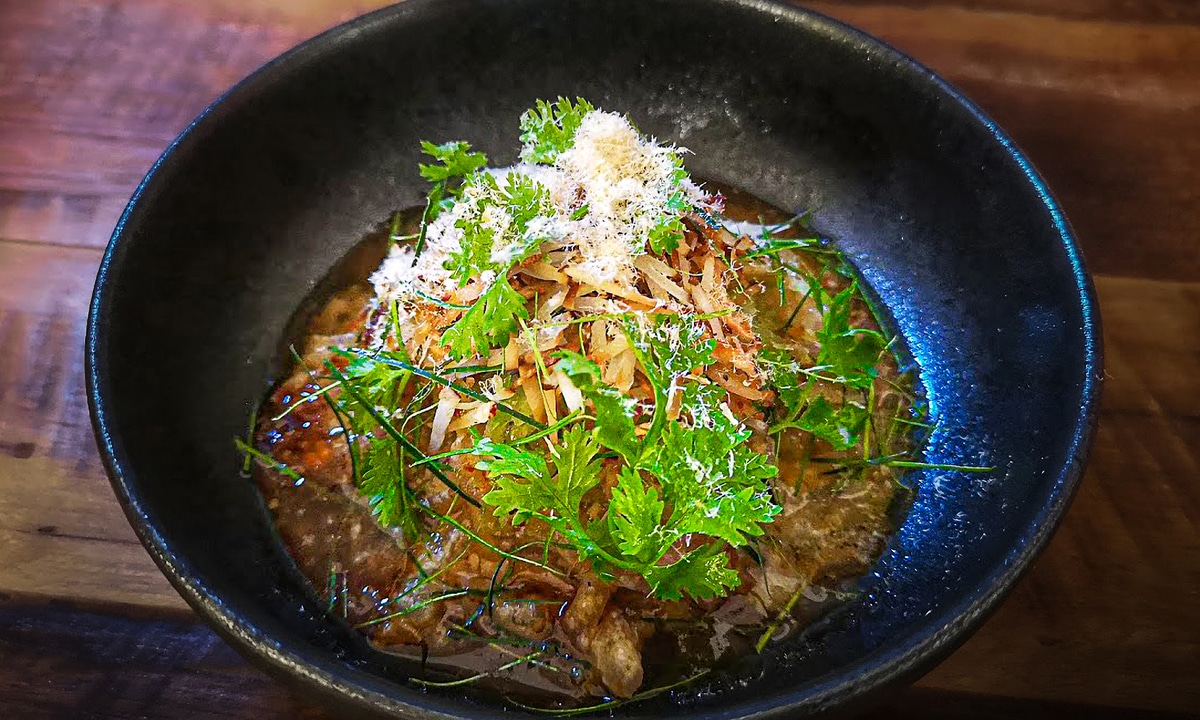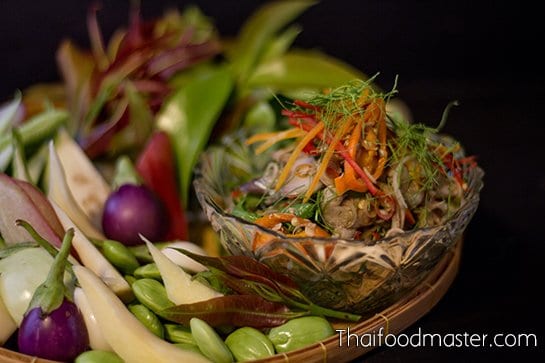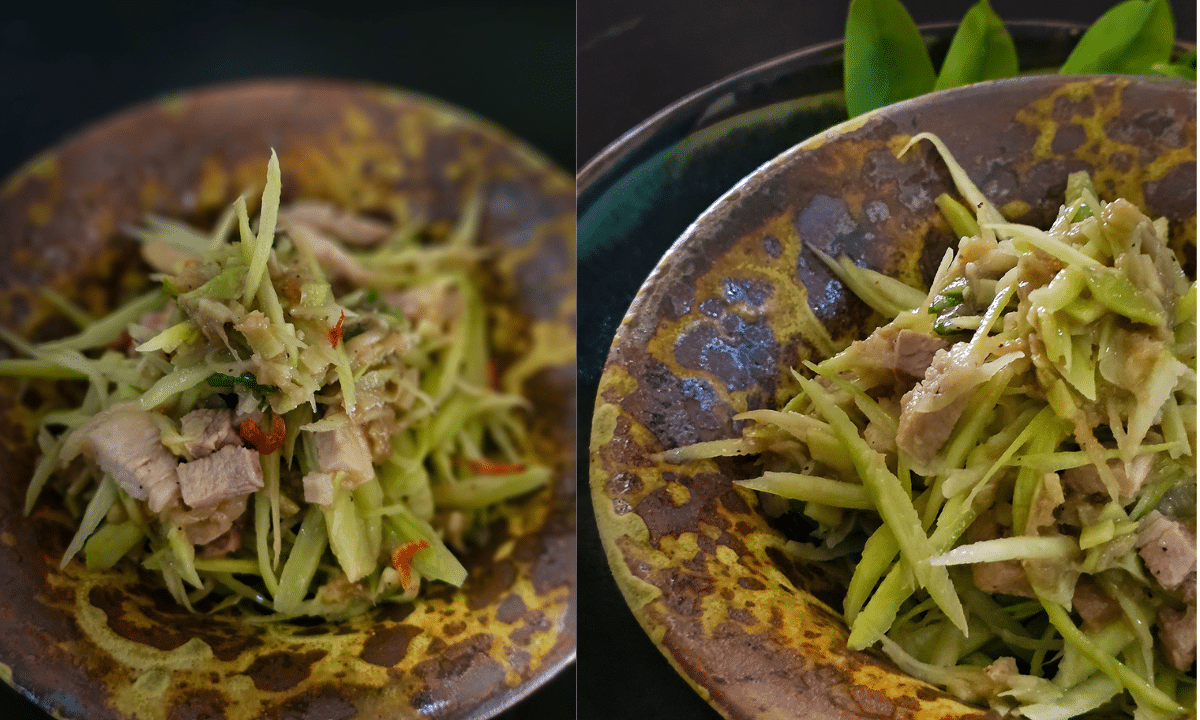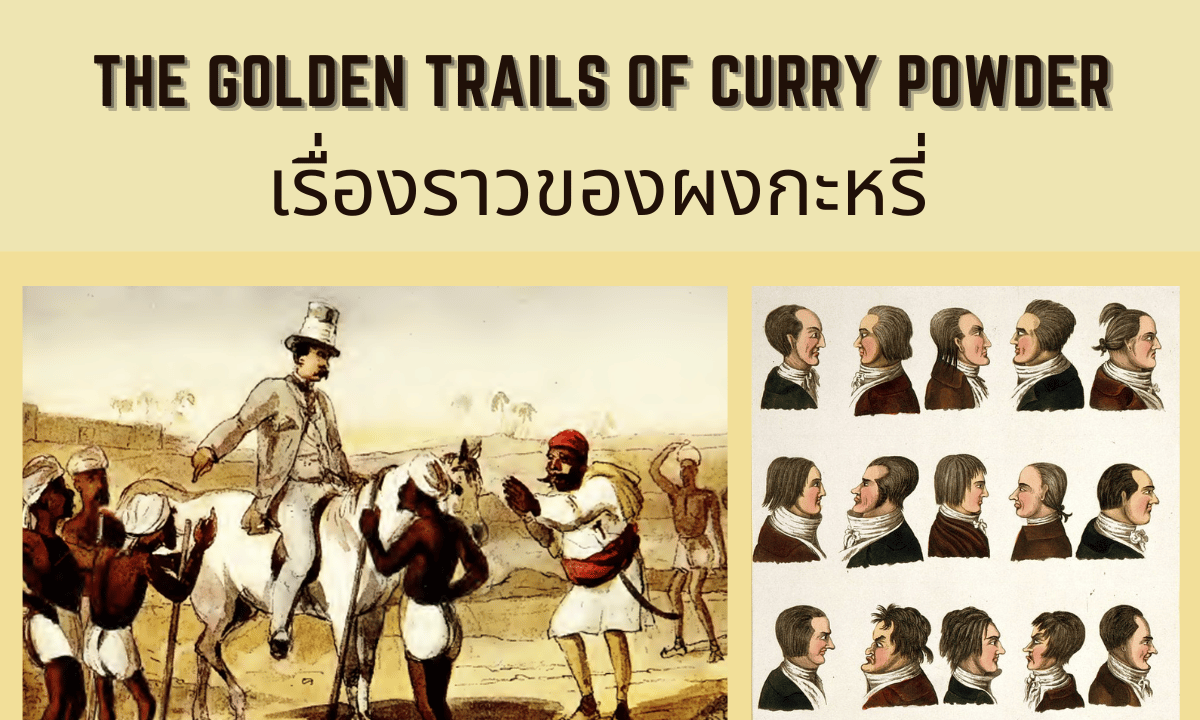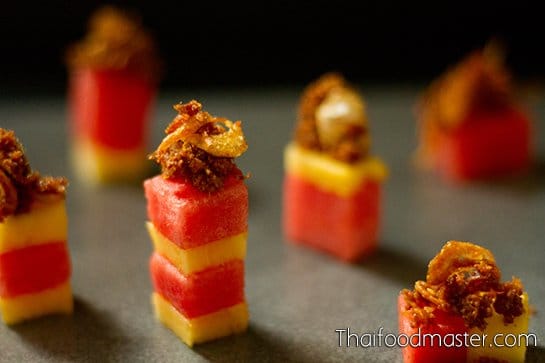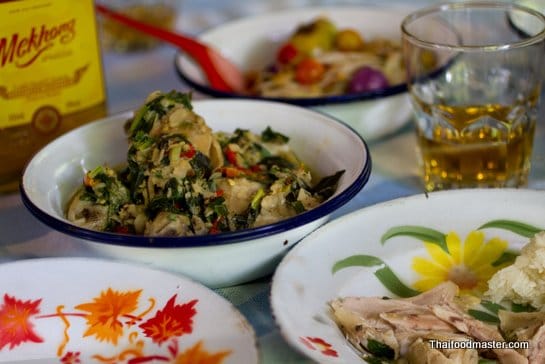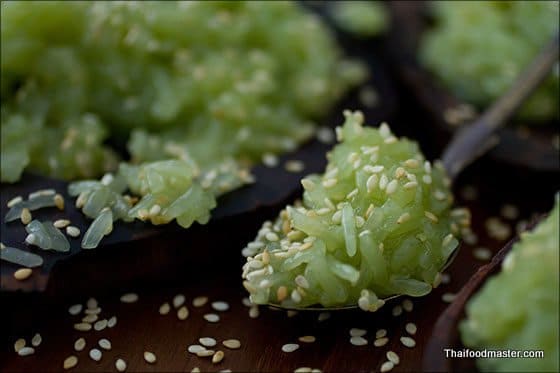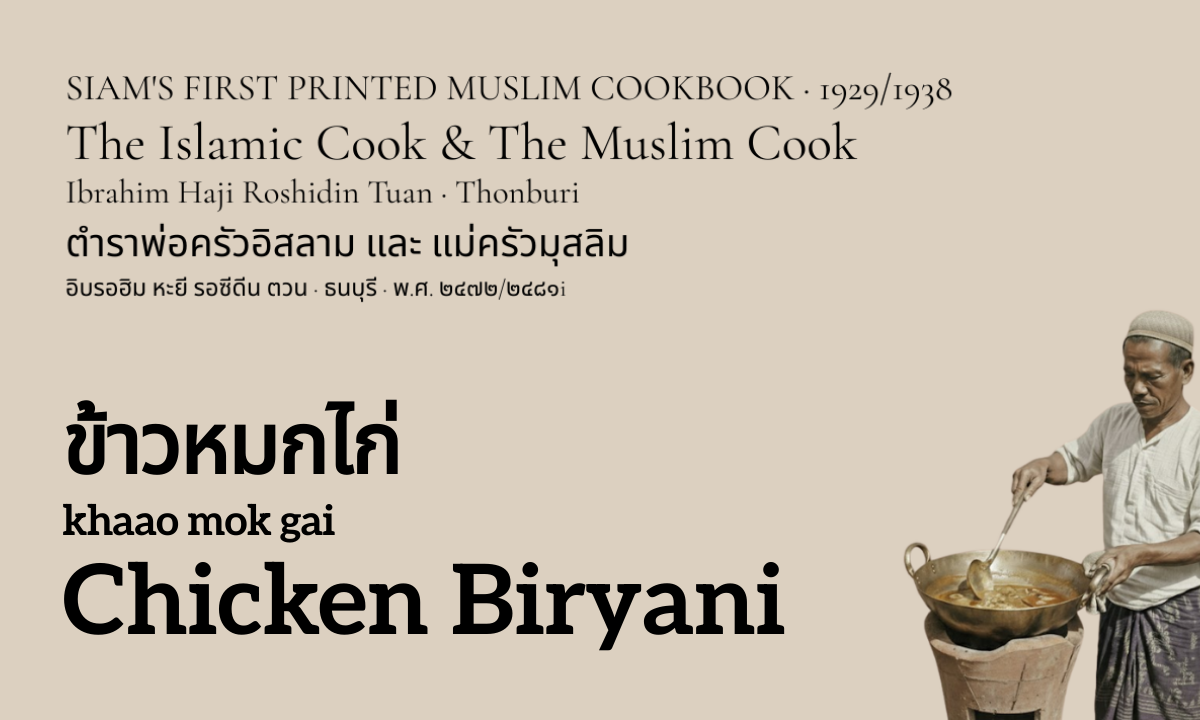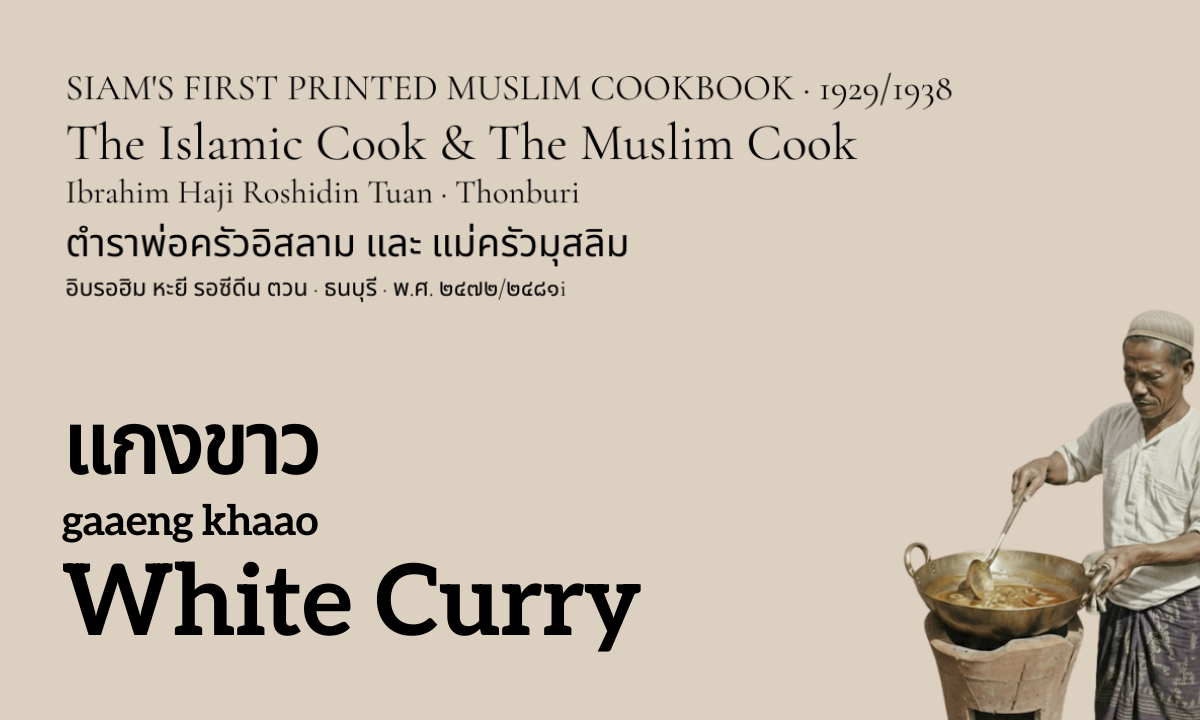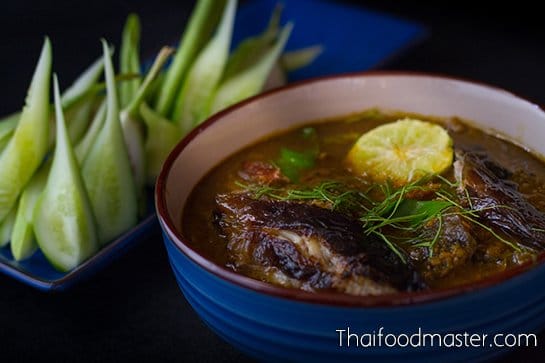
Local names:
Ratchaburi, Suphan Buri and Kanchanaburi: หญ้าเสือมอบ (yaa seuua maawp), Northern Provinces: เกี๋ยงพาใย (giiang phaa yai), Shan, Mae Hong Son: ซะเป มอกพา หญ้าลั่งพั้ง (sa bpaeh maawk phaa yaa lang phang), Karen, Mae Hong Son: พอกี่ (phaaw gee), Bangkok: สันพร้าหอม (san phraa haawm).
An herbaceous perennial plant that grows 40 to 100 centimeters tall, growing from procumbent rhizomes. Plants are upright growing with green stems that are often tinted with reddish or purple dots. The stems have few branches and the inflorescence is apically branched. Cauline foliage is large with short petioles, the 5 to 10 cm long and 1.5 to 2.5 cm wide leaves are 3-sected or 3-partite and the terminal lobe of the leaves is large and narrowly elliptic to elliptic-lanceolate or oblanceolate shaped. The margins of the leaves are toothed, the largest leaves are produced mid stem and the leaves become smaller as they descend down the stems, the bottom leaves wither away by the time flowering begins. The flowers are in capitula, which are numerous and arranged in apical compound corymbs; inflorescence 3 to 10 cm across. The phyllaries are purple-red, they also lack hairs and glands. The florets are white to reddish in color, have 5 cm wide corolla that also lack glands. The elliptically shaped fruits are 5 angled achenes which are black-brown in color and 3–4 mm long. Pappus is white and about 5 mm long. This species flowers and fruits in July through November in China. [1]Wikipedia
In Chinese, the name is Pei-lan (佩蘭), and in ancient literatures, it is also referred to as Lan-tsao (蘭草). [2]Wikipedia
In Japanese it is known as fujibakama, a term that is also applied to cultivated Eupatorium flowers which have noticeable differences (in leaf shape) from the wild E. fortunei. [3]Wikipedia
The plant is used medicinally in both Japan and China. In Traditional Chinese Medicine it is indicated for poor appetite, nausea and vomiting due to ‘dampness’ obstructions or summer heat. Its modern usage includes stomach flus and acute gastritis, in conjunction with other herbs including Huo Xiang (Agastache rugosa). [4]Wikipedia
Eupatorium fortunei contains tumorigenic pyrrolizidine alkaloids. [5]Wikipedia
The information on this website has been compiled from reliable sources, such as reference works on medicinal plants. It is not a substitute for medical advice or treatment and Thaifoodmaster does not purport to provide any medical advice.
References

